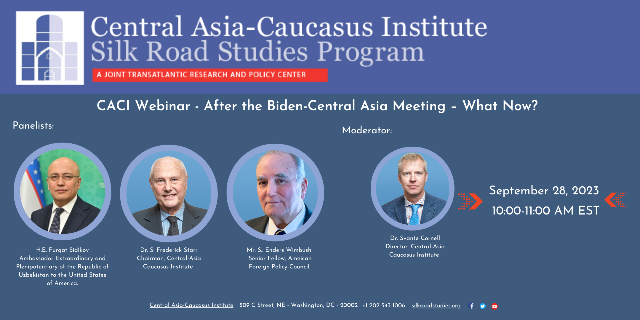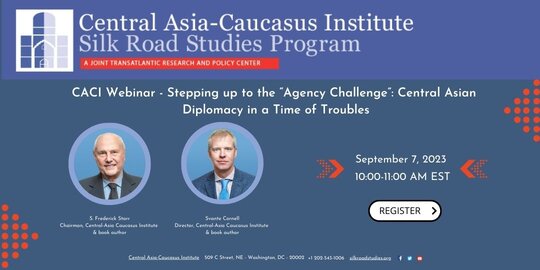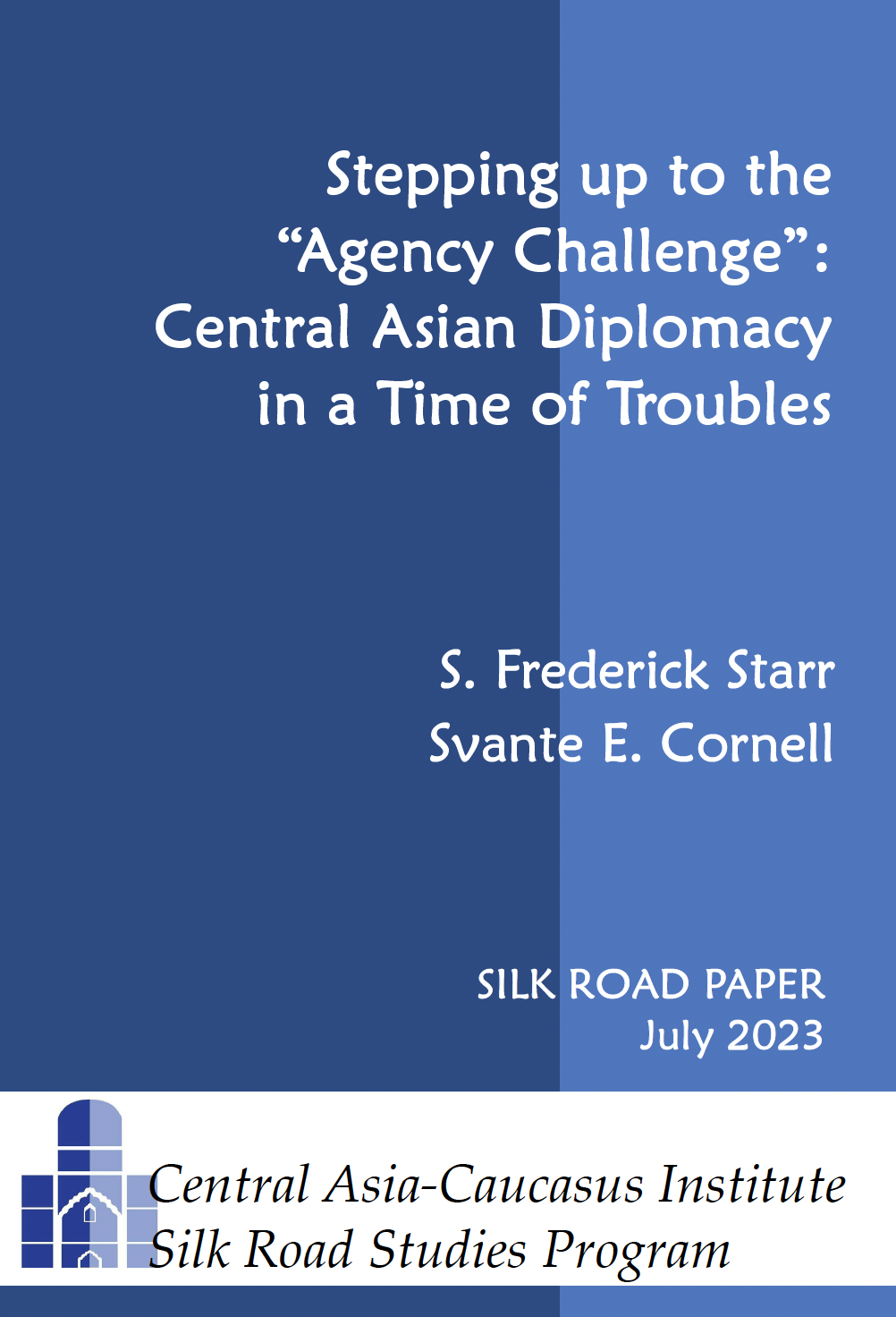Watch the 11/2 CACI Hybrid Forum - Azerbaijan-Uzbekistan Cooperation: Bridging the Caspian
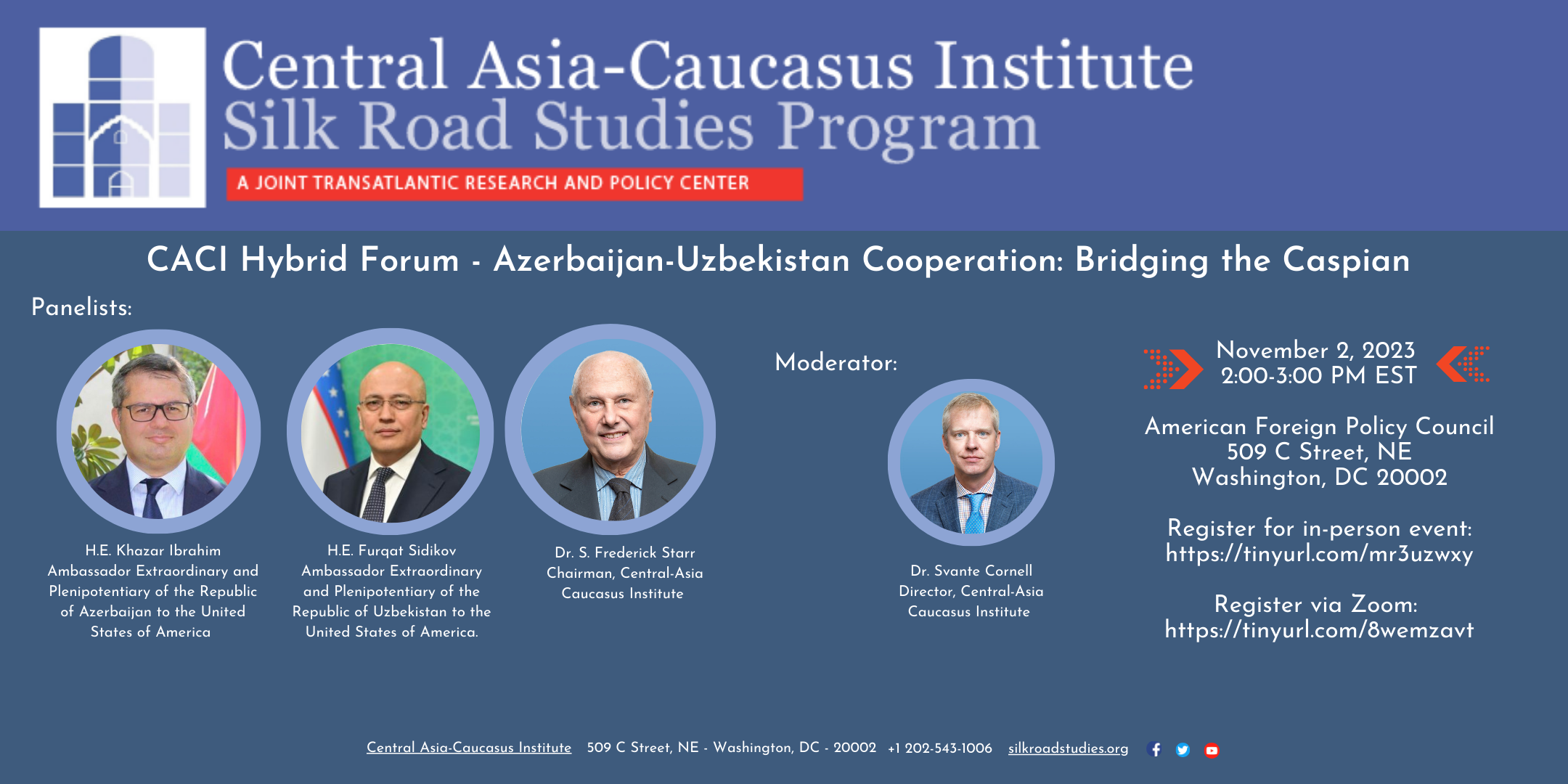
In recent months, Azerbaijan and Uzbekistan have concluded important agreements. This is an indication that the cooperative spirit that has developed in Central Asia is extending across the Caspian Sea to the South Caucasus as well. On November 2, CACI hosted a hybrid Forum discussing the implications of this trend for the wider region.
PANELISTS:
- H.E. Khazar Ibrahim, Ambassador Extraordinary and Plenipotentiary of the Republic of Azerbaijan to the United States of America
- H.E. Furqat Sidikov, Ambassador Extraordinary and Plenipotentiary of the Republic of Uzbekistan to the United States of America
- Dr. S. Frederick Starr, Chairman, Central Asia-Caucasus Institute
MODERATOR:
- Dr. Svante Cornell, Director, Central Asia-Caucasus Institute
Scroll down to watch the recording or click here to watch on YouTube.
10/4 CACI Book Launch: The New Secularism in the Muslim World: Religion and the State in Central Asia and Azerbaijan
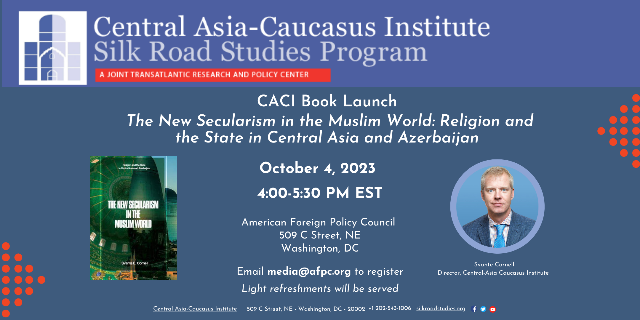
Across the Muslim world, religion and politics have become increasingly mixed in the past century, with devastating consequences. But there are signs that the ascendancy of political Islam may be coming to an end. In this context, the experience of Central Asia and Azerbaijan as Muslim-majority states that insist on secular laws, courts and education is a much-overlooked model that is bound to attract greater interest. THE NEW SECULARISM is the first study of the Central Asian model in the realm of the interaction of religion and the state, which examines its characteristics as well as how it relates to other frequently touted models in the Muslim world
Join us for the book launch and a discussion of CACI director Svante Cornell's "The New Secularism in the Muslim World: Religion and the State in Central Asia and Azerbaijan."
WHEN: October 4, 2023 4:00-5:30 PM
WHERE: American Foreign Policy Council - 509 C Street, NE, Washington, DC 20002
CACI Webinar: CACI Webinar - After the Biden-Central Asia Meeting – What Now?
On September 19, President Joe Biden met with Central Asian Presidents at a C5+1 summit in New York. This marks the first time an American president has sat down with the combined leaders of this region. What will come out of this positive step in U.S. policy toward Central Asia? What should happen next? This CACI Online Forum delves into these matters.
Scroll down to watch the recording of the webinar.
Panelists:
- H.E. Furqat Sidikov, Ambassador Extraordinary and Plenipotentiary of the Republic of Uzbekistan to the United States of America
- Dr. S. Frederick Starr, Chairman, Central Asia-Caucasus Institute
- Mr. S. Enders Wimbush, Distinguished Fellow for Strategic Studies, American Foreign Policy Council
Moderator:
- Dr. Svante Cornell, Director, Central Asia-Caucasus Institute
WHEN: Thursday, September 28 - 10:00 - 11:00 AM EST
CACI Webinar: Stepping up to the “Agency Challenge”: Central Asian Diplomacy in a Time of Troubles
Central Asia is often portrayed through metaphors such as a “Grand Chessboard” or a “Great Game,” a perspective that denies agency to the regional states. But today, it is clear that Central Asian states are capable of defining their individual and joint interests and translating them into concrete programs. This has profound implications for the United States and Europe, who can take stock of this process to expand their partnership with Central Asian states.
Join CACI Chairman S. Frederick Starr and Director Svante Cornell for a webinar discussing their latest co-authored Silk Road Studies Paper, Stepping up to the “Agency Challenge”: Central Asian Diplomacy in a Time of Troubles (July 2023).
Scroll down to watch the full video.
Stepping up to the “Agency Challenge”: Central Asian Diplomacy in a Time of Troubles
By S. Frederick Starr and Svante E. Cornell
Central Asia-Caucasus Institute & Silk Road Studies Program
Silk Road Paper
July 2023
Executive Summary
Central Asia is often portrayed through metaphors such as a “Grand Chessboard” or a “Great Game,” which suggest that the players in the game are the great powers, and the Central Asian states are merely pawns in this game. The problem with this analysis is that it denies agency to the Central Asian states. This might have been a plausible argument immediately upon their independence, when these states were indeed weak. But today, thirty years into independence, it is abundantly clear that the situation has changed.
Even though China, Russia, and the West are still able to influence the evolution of Central Asia in various ways, the Central Asian states are increasingly capable of defining their individual and joint interests and translating them into concrete programs. While institutionalization of their collaboration has lagged, the Taliban takeover in Afghanistan, Russia’s war in Ukraine, and other great power actions have promoted the regional governments to link arms as never before. Since 2016 this process has advanced rapidly, accompanied by more proactive strategies by the five regional governments themselves. While Kazakhstan and Uzbekistan have emerged as leaders in this process, Kyrgyzstan, Tajikistan and Turkmenistan are all engaged with this new direction, as is their neighbor across the Caspian, Azerbaijan.
It remains to be seen whether and in what ways major powers will acknowledge this development. What is already clear, however, is that “divide and conquer” policies will no longer be effective tools for dealing with the states of Central Asia, which will increasingly use their power of agency to ameliorate and shape the approaches of major powers.
The United States and Europe can take stock of this process to expand their partnership with Central Asian states. This includes expanding Western investment in the Trans-Caspian transportation corridor, while working closely with Central Asian states to prevent sanctions evasion. Western powers should also recognize the primacy of security in Central Asian realities, and support processes of reform in the defense and security sector to help Central Asians defend themselves against the encroachments of neighboring great powers. Last but not least, the U.S. should follow the example of the EU and raise the level of its interaction with Central Asia to the highest political level.
